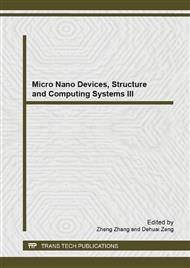p.183
p.191
p.195
p.200
p.206
p.212
p.218
p.227
p.231
Dynamic Modeling and Identification of an Electric-Hydraulic Controlled Fuel Injection System
Abstract:
Fuel consumption, related to engine operation and performance, has always been emphasized in the modern design of heavy vehicles. For identifying the operational mechanism of a novel hydraulically actuated electronic unit injection (HEUI) system from the viewpoint of energy conversion, this study presents the estimation of a nonlinear autoregressive moving average with exogenous inputs (NARMAX) models. By this modeling approach, the correlation between injection pressure and fuel rate under normal operations is detected. When mapping the NARMAX models into the frequency domain, the frequency response functions (FRFs) representing the energy transfer mechanisms in the system can then be precisely obtained. Due to the high-order FRFs responsible for the non-linear coupling between the various input spectral components, the HEUI dynamics can be demonstrated as an energy resonance of 22.5 Hz.
Info:
Periodical:
Pages:
206-211
Citation:
Online since:
April 2014
Authors:
Price:
Сopyright:
© 2014 Trans Tech Publications Ltd. All Rights Reserved
Share:
Citation:


